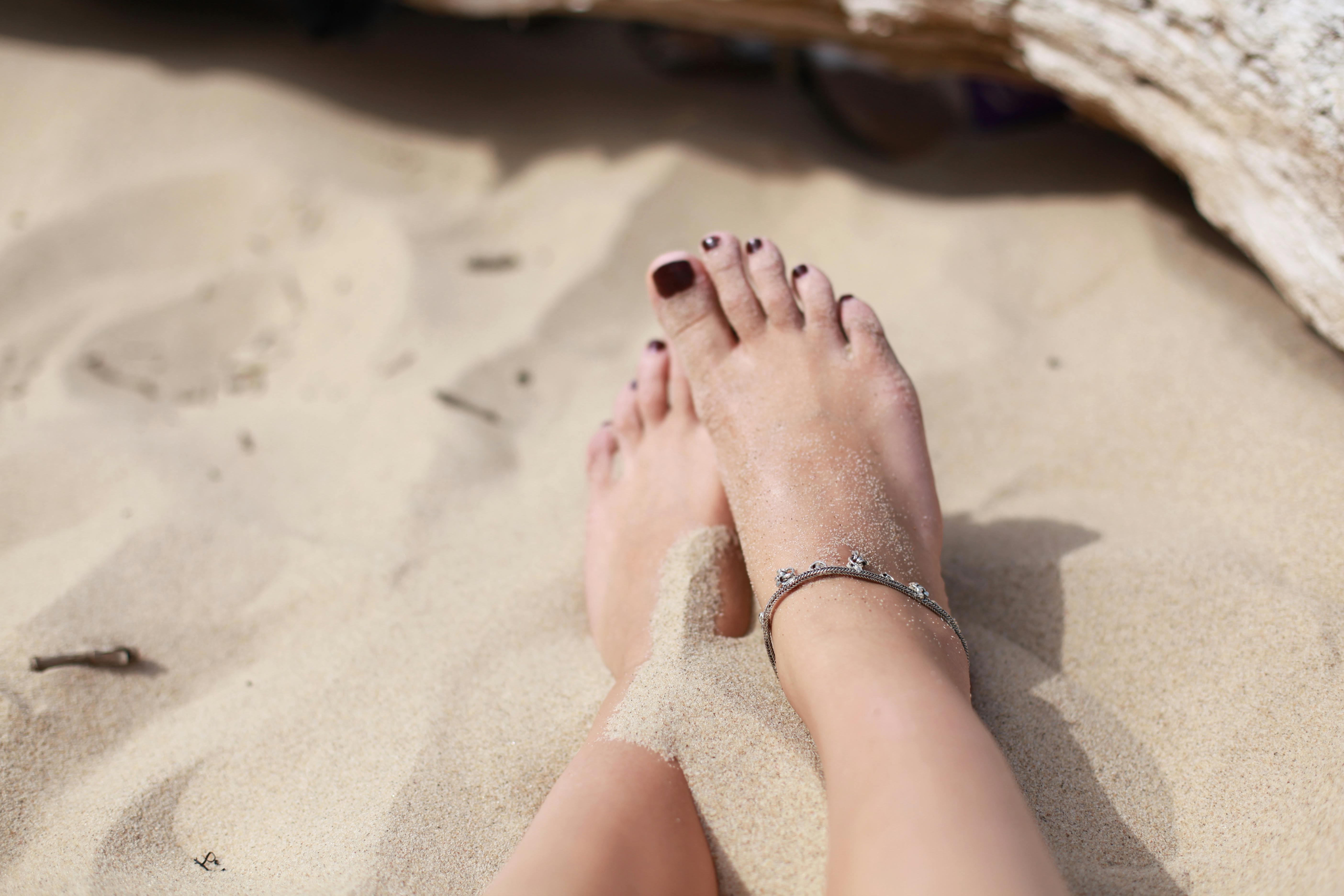Proof That Plantar Fasciitis Treatment Really Works
For some athletes, just altering running shoes can substantially reduce plantar fascia pain. A physical therapist can employ a number of various taping techniques to support the plantar fascia, offering it an opportunity to heal. Some shoes can be fitted with inserts. One example is an orthotic, which spans the length of the shoe.
Another option is a heel cup. This insert is designed to support and cushion the heel. Plantar fasciitis is associated with less flexibility in the ankle, Achilles tendon, and calf muscles. Mild stretching to enhance versatility can make the biomechanics of standing, strolling, and running less demanding for the plantar fascia.
Using gentle pressure, roll the tennis ball backward and forward under the foot. Stand 18 inches far from a wall with feet about 6 inches apart and place hands against the wall, at shoulder height. Without moving feet, lean into the wall, flexing the foot and stretching the Achilles tendon and calf muscles Sit on the floor with legs directly in front.
How to Build a Scalable Plantar Fasciitis Treatment Process
Stretches like these last two, in which the top of the foot and toes move towards the shin, are called dorsiflexion stretches. Using a cold-pack or bag of ice to bottom of the foot may supply discomfort remedy for plantar fasciitis. Relief can likewise be discovered by rolling the bottom of the foot on a frozen plastic water bottle.
Procedure Principles. For runners, increasing the number of actions per mileusing a much shorter stride however increasing cadence to maintain speedmay lower the tension on the plantar fascia despite the fact that there will be more actions per minute.1.Extra weight puts an increased stress on the plantar fascia tissue. Shedding excess pounds will lighten the load on the body's musculoskeletal system, consisting of the plantar fascia.
This prevents the plantar fascia from resting in a contracted position. (Understandably, many individuals find these splints hard to sleep in.). While it is not thought about standard treatment, deep myofascial massage may promote blood flow and recovery. While not all professionals concur, some think using manual manipulation/mobilization (by a chiropractic specialist or other certified health specialist) along with workout is an effective method to deal with plantar fasciitis.2, People with persistent, moderate to extreme cases of plantar fasciitis, might use these non-medical treatments in combination with medications, injections, or surgical treatments.
Best Plantar Fasciitis Treatment Practices for The Future

Medications are not a cure for plantar fasciitis and must be used in combination with other treatments. Non-steroidal anti-inflammatory drugs are utilized to lower swelling and inflammation, and are recommended for patients experiencing moderate to severe discomfort (Link). NSAIDs include aspirin (e.g. Bayer), ibuprofen (e.g. Advil), naproxen (e.g. Aleve), and cox-2 inhibitors.
dexamethasone) through healthy skin to the aching area.1 Iontophoresis may be recommended to clients with plantar fasciitis who can't tolerate injections or want to prevent injections. If non-medical treatments and medications do not provide remedy for plantar fasciitis, clients might think about injections. 1. Wellenkotter J, Kernozek TW, Meardon S, Suchomel T.

Int J Sports Medication. 2014; 35( 9 ):779 -84.2. Bronfort G, Haas M, Evans R, Leininger B, Triano J. Efficiency of manual treatments: the UK evidence report. Chiropr Osteopat. 2010; 18:3.3. Clar C, Tsertsvadze A, Court R, Hundt GL, Clarke A, Sutcliffe P. Clinical effectiveness of manual therapy for the management of musculoskeletal and non-musculoskeletal conditions: organized evaluation and upgrade of UK proof report.
Plantar Fasciitis Treatment Back To Basics
The plantar fascia is a long, thin ligament present along the bottom of the foot that produces the arch of the foot. It extends from the heel bone, and then splits and fans out to connect itself to the toes. Plantar fasciitis is a condition where the plantar fascia becomes swollen from overstretching or overuse, causing discomfort in the heel and bottom of the foot.
Plantar fasciitis occurs when you strain or irritate the plantar fascia ligament. Repeated pressure can lead to small tears in the ligament, leading to pain and swelling, which can make strolling hard. Strains can happen due to: High or low foot arch Obesity or sudden weight gain Tight Achilles tendon which links the calf muscles to the heel Beginning a brand-new activity or increasing the intensity of an activity Wearing inappropriate shoes with soles that are too soft, do not fit well or offer bad arch support The major complaint of plantar fasciitis is pain and tightness in the heel and foot.
Your medical professional might watch how you stand and walk, and assess associated conditions such as high arches. X-rays of the foot can be taken if your doctor believes a stress fracture, a hairline fracture in the bone, or other associated conditions such as a heel spur, which is additional calcium deposit on the heel bone.
What Everyone Ought To Understand About Plantar Fasciitis Treatment
Conservative treatment steps include: Rest: Rest is the primary step that is thought about for minimizing discomfort and preventing additional damage to the ligament. Ice: Rolling your foot over ice can be really effective in reducing swelling, and is recommended for 20 minutes, 3-4 times a day Medications: NSAIDs (non-steroidal anti-inflammatory drugs) may be prescribed for relief of pain and swelling Exercise: calf stretches and plantar fascia stretches are effective in easing pain A steroid injection may be administered into the plantar fascia for reducing pain and inflammation Encouraging shoes and orthotics might also be suggested to minimize the discomfort while strolling or standing Night splints can be recommended by your medical professional to assist extend the plantar fascia while sleeping Physical therapy may be advised for instruction on stretching workouts, massage and ice treatments PT might use extracorporeal shockwave therapy (ESWT), which utilizes high-energy shockwave impulses to promote recovery of the harmed plantar fascia tissues Surgical treatment is considered just if conservative treatment does not offer efficient relief after 12 months.
Gastrocnemius economic downturn: Tight calf muscles or gastrocnemius muscles can strain the plantar fascia. To release this tension, your cosmetic surgeon will surgically extend the calf muscle, and increase the movement of the ankle (Important Source). The surgical treatment can be carried out by open incision or endoscopically through a little incision by utilizing an endoscope, which is a long instrument with a little electronic camera connected.
Your surgeon will partly cut the plantar fascia ligament to ease the tension. The surgery can be performed endoscopically but open cut is simpler to carry out and is connected with lower risk of nerve damage. Problems are uncommon following surgery to deal with plantar fasciitis, however just like any surgery, they can take place.
Blogger's Plantar Fasciitis Treatment Guide for This Year
If you are experiencing symptoms of plantar fasciitis, extensive treatment from our foot specialists is readily available at ORA Orthopedics. As the largest and most sophisticated orthopedic practice in the Quad Cities, ORA Orthopedics uses the greatest options in care to children and grownups with a wide variety of musculoskeletal conditions, including plantar fasciitis and other unpleasant or uncomfortable foot issues (Address).
This condition is usually marked by higher foot discomfort and tightness after not throughout exercise or extended durations of inactivity. Plantar fasciitis may also trigger bone stimulates, or little boney growths, to establish on the heel bone. The skilled doctors and personnel at ORA Orthopedics' Foot and Ankle Center of Quality are trained in the newest treatment strategies and use patient-focused care that is second to none in the Quad Cities.
No comments:
Post a Comment